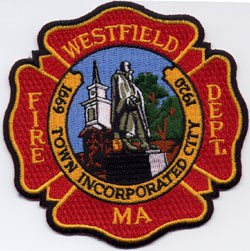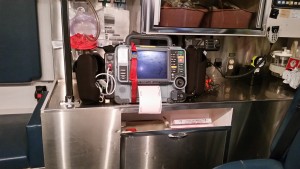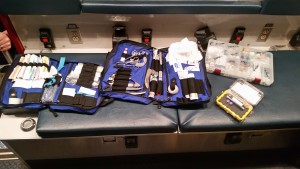WESTFIELD—During last Tuesday’s snowstorm, a man in his 80’s collapsed while shoveling.
However, the response from paramedics and firefighters at the Westfield Fire Department may have helped save the man’s life.
According to the Westfield Fire Department, the man suffered a cardiac arrest while shoveling and the paramedics and firefighters were able to resuscitate and stabilize him, eventually bringing him to Baystate Noble Hospital for further treatment. From there, he was brought to Baystate Medical Center by the same department for further treatment, still alive.
And it is this incident that prompts the department to remind people that when it comes to shoveling, be certain that you can physically handle the strain without injuring yourself or worse.
“There’s a danger, that exertion,” Westfield Fire Deputy Chief Eric Bishop, said. “With the heavy snow it increases your workload. An individual may attempt to try and shovel because it seems quick and easy but as it turns out it’s heavy and incredibly labor-intensive.”
This incident though, not only gives an extreme example of what can happen with overexertion—especially during the wintertime with snow—it also gives an example of what Westfield firefighters, paramedics and EMTs, as well as those around the country, are able to do, particularly as a team.
“It’s a team effort involving the ambulance and engine crews for patient resuscitation, stabilization and transport,” Bishop said.
“We have a ton of stuff we are able to do,” Westfield Fire Capt. Seth Ellis, said. “Some things we can directly intervene with and some things we can bridge the gap until the hospital.”
Both Bishop and Ellis are paramedics in addition to their ranking positions at the department. However, as Bishop stressed, it was not just the paramedics that may have saved that man’s life. The department is staffed with EMTs and paramedics among their ranks of firefighters, both of which have the qualifications to provide trained medical attention and work as a team to help improve the outcome of the patient.
Before we go further though, the difference between EMTs and paramedics is based on both skills and training. For EMTs, they are able to assist due to training in basic life support (BLS), which includes first aid, CPR, automated external defibrillator (AED) use, bleeding control, assistive breathing, certain medication administration and acquisition of vital signs, among other abilities.
Paramedics’ skills go beyond those of an EMT, and include training known as advanced life support (ALS) and advanced cardiac life support (ACLS). Some skills include establishing intravenous (IV) access for the administration of medications or fluids, assisting with breathing and airway protection with skills like intubation, which is the insertion of a tube into the lungs through the airway of a person, as well as treatment for some heart—also known as cardiac—issues through medication and electricity. These skills are trained in programs that include both classroom learning, as well as internships in medical facilities and within ambulance services.
Also, in Massachusetts there is a third level, known as EMT advanced, which essentially bridges the gap between EMT and paramedic. This level of EMT training allows for the placement of IVs, fluid administration and advanced airway management, among other skills.
Paramedics at Westfield Fire Department are also in charge of 36 medications on the ambulances, which include some for narcotics overdoses, breathing problems, cardiac problems and more. They also utilize monitor-defibrillators, which allows them to observe, among other things, cardiac rhythms, pulse and blood pressure.
Each provider is also trained in a number of protocols, which will help dictate what steps should be taken based on what is known as an algorithm. The protocols are determined by what the provider may observe about the patient. In addition, EMTs, advanced EMTs and paramedics are given medical control through a doctor at a local emergency room, who can help guide the provider for more complicated issues, if need be.
“We do a full assessment of the patient’s condition and treat based on that,” Bishop said. “The ‘why’ will determine our treatment.”
According to Bishop, the department currently staffs at least one paramedic on each ambulance in the city, which has four full-time ambulances and one on-call. These crews will respond to any number of emergencies, whether it is a cardiac arrest or someone who needs assistance getting up after falling.
“The department can deal with cardiac issues, breathing issues, trauma and bleeding control, all the way up to pain management and childbirth, and everything in between,” Bishop said.
According to Bishop and Ellis, the paramedics and EMTs also go through regular training to maintain their skills.
According to the Massachusetts Office of Emergency Medical Services, training must include 60 hours of continuing education units that are required every two years for paramedics, 40 hours of continuing education units for EMTs every two years and for advanced EMTs 50 hours every two years.
“We emphasize high-quality paramedicine, always training to handle any emergency that may come up,” Bishop said.
“Even if we received a certification 20 years ago, we’re still staying current and up-to-date with skills, knowledge and protocol,” he added.



